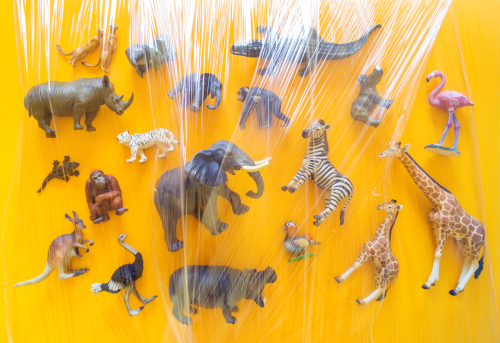Environmental Responsibility

90% of Millennials* believe it is up to us – manufacturers, retailers, brand owners and developers – to act responsibly in tackling environmental issues. 44% of Millennials* claim that they will only shop at retailers which reflect their values. Climate change is the burning issue (literally) which is increasingly setting the agenda as to which values matter to them most. *Source: Pew Research

However, toy shoppers will not change their behaviour comprehensively and voluntarily unless it is made seamlessly easy and seemingly without deprivation (like a successful calorie-controlled diet). In those circumstances, they will then respond proactively with their feet and their wallet.
The place: Spielwarenmesse, Nuremberg 2020.
The message: as an industry we are rising to the challenge. We are investing our R&D budgets to improve sustainability in the design and manufacture of toys. It is no longer inevitable that we will be caught short as the “poor relation”, exposed and shamed in all our colourful plastic glory, to the other categories which our toys sit adjacent to at retail, be they in food, beverage, household, clothing, health or beauty.
In every exhibitors’ hall in Nuremberg there was a plethora of claims being made about sustainability. Many exhibitors proudly unveiled their brand’s newfound sustainability, the culmination of careful investment of resources and expertise. A few exhibitors proudly unveiled and promoted their sustainable claims as a unique competitive advantage.
“Recycled plastic was used to make this product”. “All our packaging is 100% recyclable”. “We only use sustainably sourced materials”. “We operate within a circular economy”. “We’re made of FSC wood and water-based paints”. “We’re made of bamboo, rice husks, bio plastics”. “Recycle our packaging… oh but, not that bit, or that bit.”
I am an expert in shopper behaviour at retail and an expert in marketing to kids and adults, consumers in the home, but I am not qualified to comment on or judge structural engineering, the chemistry of sustainable production (I dropped chemistry at the age of 13) or the logistics of a circular economy. I am not qualified… and neither is your average toy shopper. Nor do they have the time or the inclination to spend it educating themselves about the nuances and detail behind every claim being made about sustainability.
The toy industry can do much, in its benevolence, to assuage the guilt of the conscious consumer and nudge the behaviour of the not-so-conscious consumer. The most important next step is for companies to stop treating each development in sustainability as a potential competitive advantage for their brand – the “my sustainability is better than yours” approach, and to stop shouting all at once.
It only serves to confuse shoppers. What happens when shoppers are overloaded with competing messages? They feel misled, cynical and unable to trust any information, however authentic. They disengage or reach a point of decision paralysis. They may choose to act based on the simplest of messages, the lowest common denominator and “green washing”, and choose to overlook all that strenuous and genuine investment made by companies with conscience to find genuinely green alternatives and innovative solutions.
It is not just down to brands, of course. There are a few ways in which retailers, especially online, can support shoppers by providing clarification and nudging their behaviours in the right direction with incentives and rewards.
What works? What can be synergised between brand and retailer?
- Incentives to encourage shoppers to “buy green and dispose green”. There is nothing better than a financial incentive to nudge the right behaviour and that includes rewarding shoppers with a small discount for increasing their knowledge of sustainability using online user guides.
- Simple, easy to visualise messages. I like Green Toys’ approach. “This toy is made using 11 recycled plastic milk cartons”. More complex toys which use multiple materials can, nevertheless, make these claims too for some of their components.
- Simple, easy and visualised instructions on how to separate components of product or packaging for recycling, making sure that “end of life” instructions for the disposal of toys are easy to memorise or locate and motivating to act upon.
- How about adding a prompt during the customer review process which encourages reviewers to rate the toys they have bought based on durability, longevity and ease of recycling? This will enable brands to better justify the premium they have need to charge to offset the financial cost sustainability.
There are plenty of parents who will continue to buy toys made of non-recycled plastic, knowing of its impact on the environment. I was listening to parents in research only last week sucking the air between their teeth and saying “all that plastic, it’s a shame isn’t it… but if my child wants the toy, I will get it for them, regardless” (I have taken the liberty to paraphrase, of course).
Without a cohesive, independently monitored and credible Sustainability Rating System, spanning toys and all other categories, we need to work together pre-competitively, and in unison to nudge shoppers in the right direction. A plea on behalf of the thousands of confused and frustrated parents we listen to continuously at Consumer Fluent, who simply want to buy a toy with an easy conscience but cannot cut through the cacophony of brands shouting their green credentials all at once:
Ask not what your shoppers can do for you, but what you can do for your shoppers.